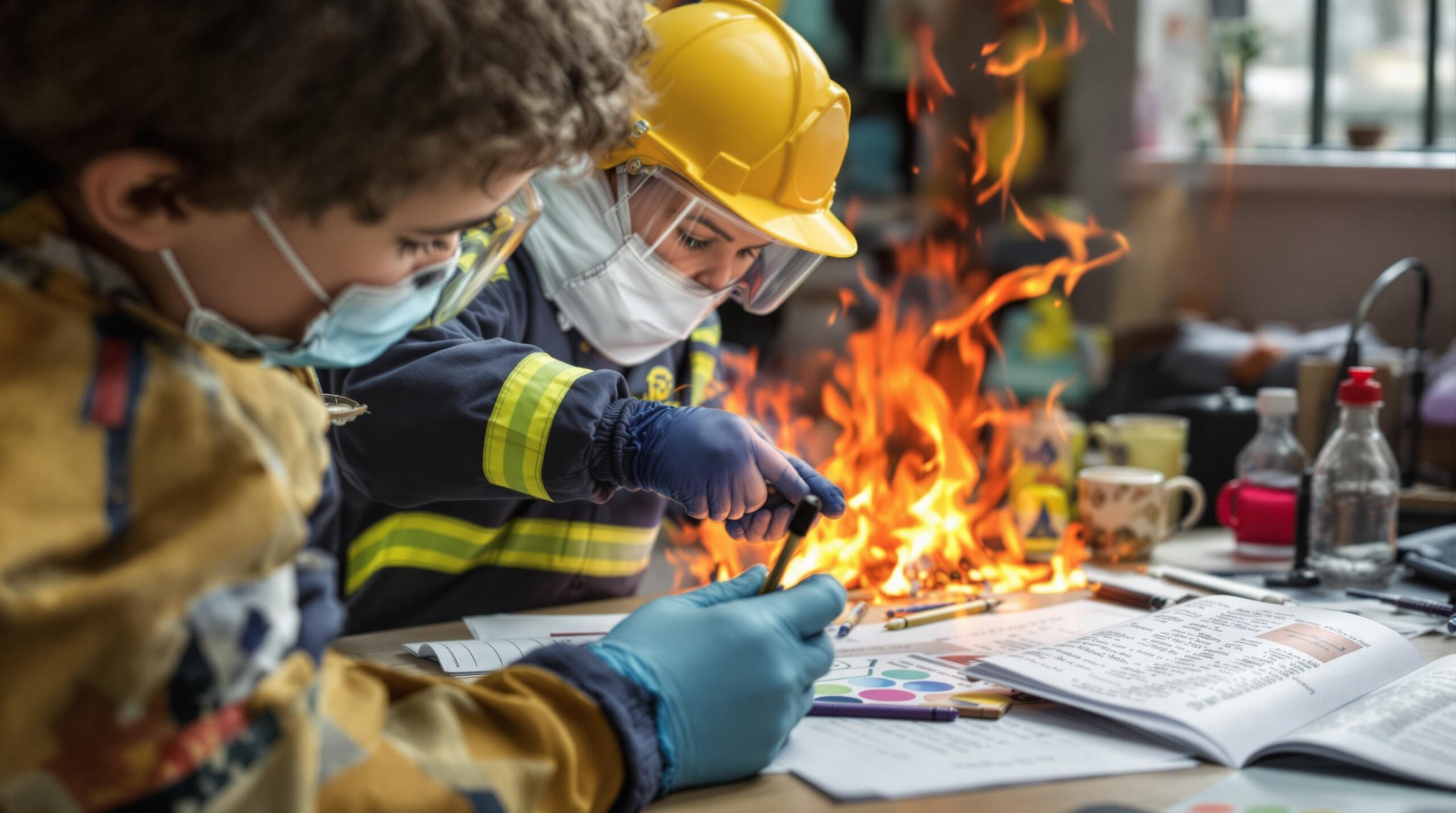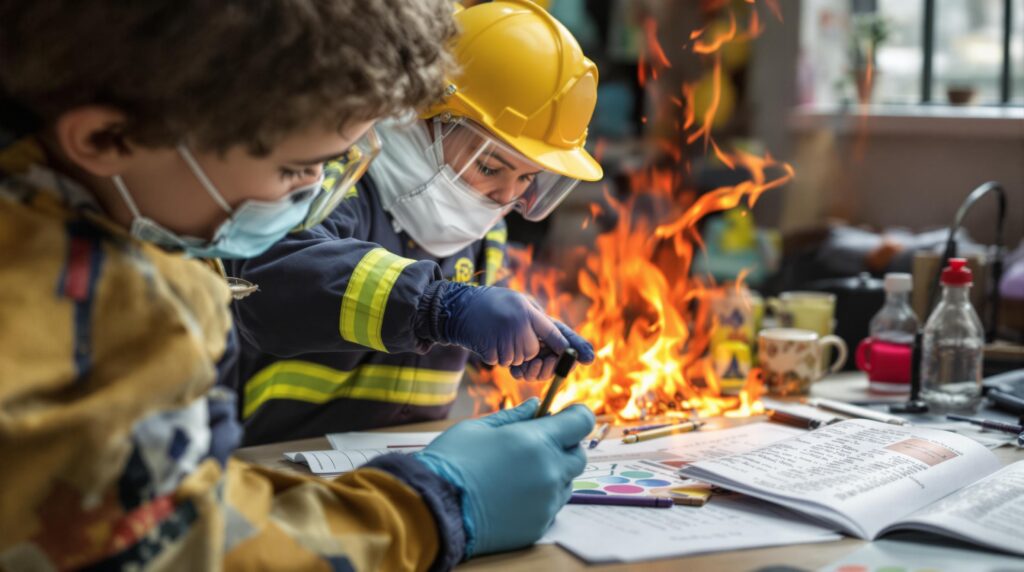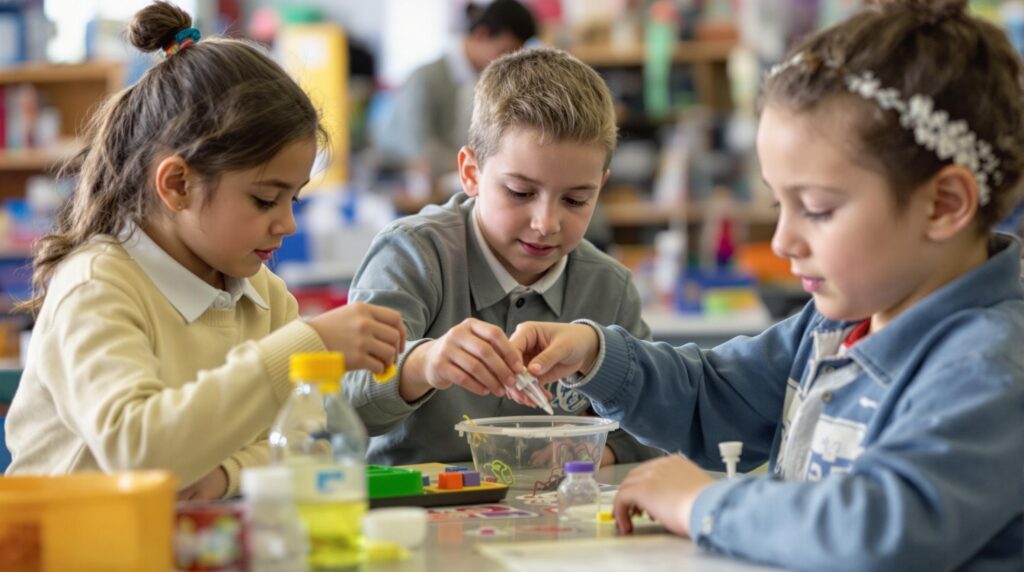Fire investigation combines detective work with scientific analysis, making it an exciting field for curious young minds to explore. Through an arson investigation webquest, children can learn about forensic techniques while developing critical thinking skills in a guided online adventure that simulates real detective work.
Key Takeaways
- Arson investigation webquests provide hands-on learning about fire science and forensics
- Children develop critical thinking skills while solving simulated fire investigation scenarios
- These activities blend STEM education with exciting detective work
- Kids learn important fire safety principles through engaging online challenges
- Webquests offer a safe environment to explore forensic science concepts
What Is an Arson Investigation Webquest?
An arson investigation webquest is an interactive online learning adventure designed specifically for kids who are curious about forensic science. These digital activities guide children through a series of challenges where they take on the role of fire investigators examining evidence from a simulated fire scene. Unlike traditional worksheets, an arson investigation webquest engages children in active problem-solving as they collect clues, analyze data, and draw conclusions about the cause of fires.
These educational webquests typically include a variety of multimedia elements such as videos, images, interactive diagrams, and virtual lab activities. Children might examine burn patterns, identify accelerants, interview witnesses, and document their findings—just like real fire investigators. The structured format helps kids stay focused while building knowledge about fire science and investigation techniques in an age-appropriate way.

Educational Benefits of Fire Investigation Activities
Fire investigation webquests offer numerous educational advantages that extend beyond just learning about forensic science. These activities support the development of critical thinking as children must carefully analyze evidence and draw logical conclusions. The scientific method comes alive as kids form hypotheses about fire causes, test their theories through virtual experiments, and revise their thinking based on new evidence.
Children also gain valuable knowledge about fire safety principles as they learn how fires start and spread. This understanding can help them recognize potential hazards and make safer choices in their everyday lives. Additionally, these webquests often incorporate elements of chemistry, physics, and environmental science, making them excellent supplements to school STEM curriculum.
The collaborative nature of many webquests helps develop teamwork and communication skills. When children work together to solve an arson mystery, they must share observations, discuss theories, and reach consensus—valuable skills for future academic and professional success.
Setting Up an Arson Investigation Webquest at Home
Creating an engaging arson investigation experience at home is easier than you might think. Start by setting up a dedicated learning space with a computer or tablet that has internet access. Many educational websites offer free or low-cost fire investigation webquests designed specifically for children, with age-appropriate content and clear instructions.
Before beginning the webquest, take time to introduce basic concepts of fire science and investigation. You might discuss the fire triangle (fuel, heat, and oxygen) and explain how investigators look for the point of origin in a fire scene. This background knowledge will help children make sense of the information they encounter during their investigation.
Consider these essential elements for a successful home webquest experience:
- A quiet environment with minimal distractions
- Basic supplies like paper and pencils for note-taking
- A simple notebook for documenting “evidence” and conclusions
- Optional props like magnifying glasses to enhance the detective experience
- Scheduled breaks to prevent screen fatigue
Simple Hands-On Activities to Complement Online Learning
While the arson investigation webquest provides a structured digital experience, adding hands-on activities can deepen understanding and make the learning more memorable. These offline components help reinforce scientific concepts while giving children a break from screen time.
Try setting up a simple demonstration of how different materials burn at different rates. Using adult supervision and proper safety precautions, you might compare how quickly different types of paper burn, or observe how materials like cotton and polyester react differently to heat. These demonstrations should always be conducted by adults with appropriate safety measures, including fire extinguishers and protective gear.
Another engaging activity involves creating cast impressions of shoe prints or tire tracks using plaster of Paris—similar to techniques real investigators use at fire scenes. Children can also practice observation skills by examining photographs of fire damage and identifying potential clues about the fire’s origin. For a chemistry connection, try some fun experiments with vinegar and baking soda to demonstrate chemical reactions in a safe way.
Age-Appropriate Investigation Challenges
The complexity of arson investigation webquests should match the child’s developmental stage and abilities. For younger children (ages 6-8), focus on basic concepts like identifying fire hazards in a home and understanding the role of firefighters. Simple matching activities and picture-based clues work well for this age group.
Children ages 9-11 can handle more complex scenarios with multiple pieces of evidence. They might analyze burn patterns in photographs, evaluate witness statements for consistency, and draw conclusions based on scientific principles. Webquests for this age group often include guided note-taking sheets and step-by-step instructions.
For older children (12+), arson investigation webquests can introduce more sophisticated concepts like accelerant detection, timeline reconstruction, and the chemistry of combustion. These webquests might include virtual lab simulations and require more independent research and critical analysis.
Safety Considerations for Fire Science Activities
While learning about fire investigation is educational, safety must remain the top priority. Arson investigation webquests provide a safe virtual environment to explore fire science without actual flames. All complementary hands-on activities should be carefully designed with appropriate supervision and safety measures.
Use this opportunity to reinforce important fire safety rules with children, including:
- Never experimenting with fire without adult supervision
- Understanding and practicing home evacuation plans
- Knowing how to call emergency services
- Recognizing common fire hazards in the home
If you include any demonstration involving actual flames, these should be conducted by adults only, with proper ventilation, fire extinguishers ready, and in a space clear of flammable materials. Many fire science concepts can be illustrated using heat-free alternatives, such as videos or simulations.
Turning Investigations into Career Exploration
Arson investigation webquests can spark interest in future career paths related to forensic science, firefighting, or criminal justice. Use these activities as a springboard to discuss the various professionals involved in fire investigation, from firefighters who spot signs of arson to forensic chemists who analyze evidence in laboratories.
Consider arranging a virtual or in-person tour of a local fire station, where children can learn about the equipment and training firefighters need. Many fire departments offer community education programs and may have personnel who specialize in fire investigation willing to answer questions.
For children showing continued interest, look into junior firefighter programs, science camps focusing on forensics, or community emergency response training for teens. These experiences can help nurture their curiosity while building valuable skills for potential future careers.
Showcasing Learning Through Creative Projects
After completing an arson investigation webquest, encourage children to demonstrate their learning through creative projects. These culminating activities help reinforce key concepts while giving kids a sense of accomplishment.
Some engaging project ideas include:
- Creating a digital presentation explaining how they solved the arson case
- Designing a poster showing the scientific principles behind fire investigation
- Writing a story from the perspective of a fire investigator
- Making a short video demonstrating proper fire safety practices
- Building a diorama of a fire scene with labeled evidence
These projects not only consolidate learning but also develop important communication skills as children organize their thoughts and explain scientific concepts in their own words. Consider sharing these projects with family members or classmates to celebrate their accomplishments as junior fire detectives.



